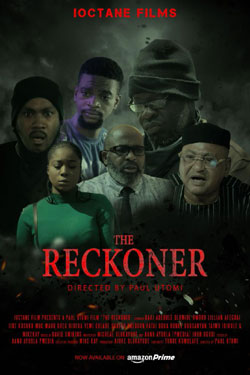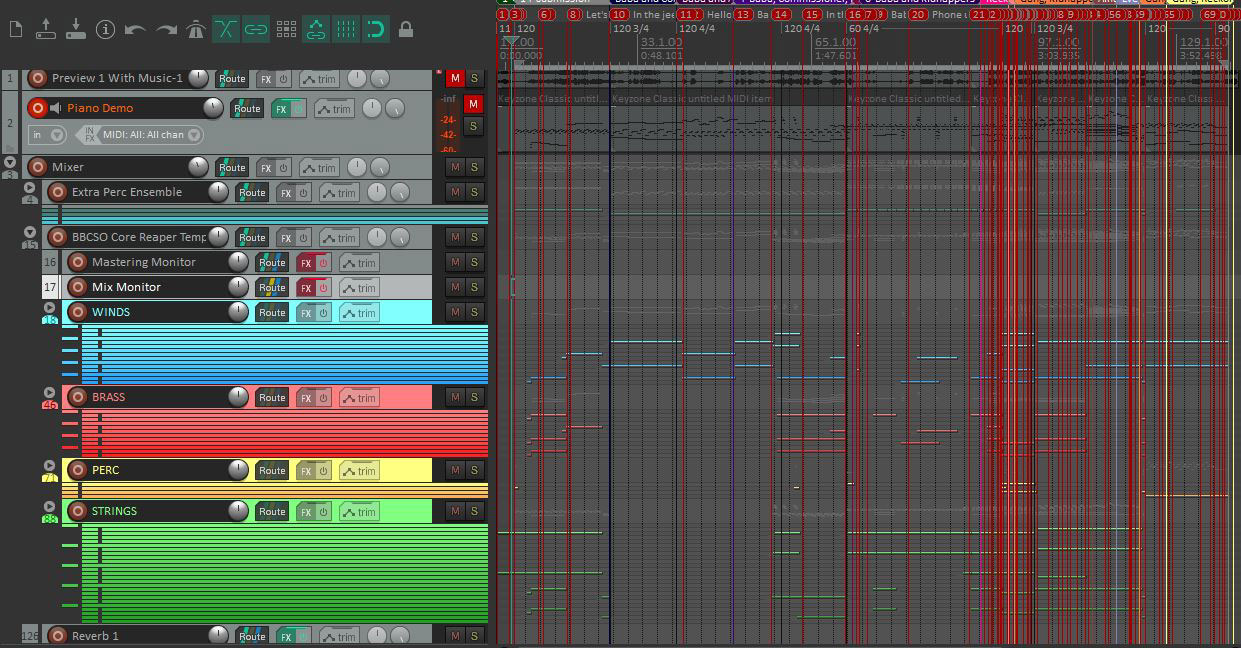
“The Reckoner” (2021) is a feature-length action film on Amazon Prime by Michael Olukayode of IOctane Films.
My percussive score fuses West African instrumentation with orchestral forces to create exciting,
unpredictable music which follows the story of a gang of vigilantes in the Nigerian bush.
In the film, Adam, an armed robbery gang leader suddenly develops the ability to anticipate the
future atrocities that will be committed by everyone he meets. As a result, his gang finds themselves
up against a powerful ritual-kidnapping syndicate with an unwilling ally in Eve, a victim of sex for
grades and kidnapping, who joins them in their quest.
Composing a 40-minute soundtrack was a huge project and gave me amazing scope to develop contrasting
musical themes and leitmotifs and to play these off against each other in dramatic moments.
Using idiomatic instruments like the Diabara Percussion Ensemble and the Bolon enabled me to
create an immersive soundscape with diverse colours and rhythmic hooks. I am delighted that my
soundtrack stands proudly alongside the film and on its own two feet.
The full soundtrack album is available to stream now on all streaming platforms, including Spotify,
Amazon, and Deezer. Enjoy!
Cue breakdown
My favourite scene to write a musical cue for in the film was “Your Cup is Full”.
Working out hit points (frames the music needs to synchronise to exactly), a process called ‘spotting’, is always the first step in my composition process, because they define the mood of the scene and the trajectory the music should follow. For example, the red lines on my digital audio workstation (DAW) signify hit points and shows that they build up towards the third minute. This aligns with the movement of the scene towards the climax of the attack. As a result, I can track exactly when the attack happens in the extract, which will inform my decision of what music to write.

The next step in my process is composing a piano demo, so that I have all my musical notes written before I begin to think about choosing which instruments will play them. For me, this part of the process means sitting at the piano and trying out a lot of different ideas. Beforehand, I will have developed several leitmotifs, musical themes which represent the important characters or features of the story. This particular scene features much of the cast, so I worked out ways to overlap and weave these motifs together, to create dialogue between them.
Next, I orchestrated the music I had written, choosing which instruments or combinations of instruments would play the musical ideas I had worked out the best.
- The scene begins in a fanfare style, so I spread the music across much of the orchestra, with particular emphasis on the brass and strings, who play a variation on the theme of the main character Adam.
- When the antagonists appear in the scene, ominous wind chords and the deep resonance of the Bolon (a West African harp) create a dark mood which underscores their dialogue.
- The strings eventually return accompanied by brass chords and woodwind flutters as the momentum of the scene builds up.
- The bass drum, cymbals and timpani burst in at the same time as the attack.
- As the action in the scene calms down, so the instrumentation reduces, removing the percussion again, followed by the brass.
- The scene focusses in on Eve, a victim of the antagonists who is traumatised by the attack. This is represented by a change to lighter underscore, with a marimba solo and woodwind outlining her theme as the scene ends.
After I am happy with how the cue has been orchestrated, I get to work on mixing. This involves checking the dynamics of the instruments, making sure their sounds and levels blend, and adding in extra electronic effects such as reverb and compression to polish off the sound.
Some brief editing was needed, so I worked with director Michael Olukayode to make sure I adjusted and updated my score as necessary.
Once we were both happy, I added the details of the track to the cue sheet, so the editor knew where it featured in the film. One finished cue achieved! Then on to the next one.